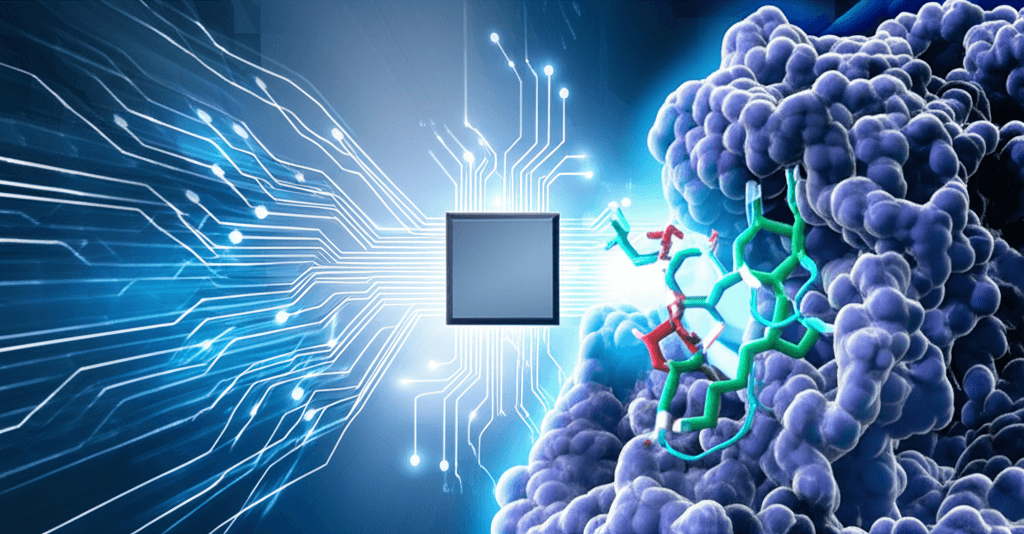New Boltz-2 AI Accelerates Drug Discovery 1,000x, Revolutionizing Medicine
A revolutionary open-source AI, Boltz-2 predicts drug-protein binding 1,000x faster, unlocking new medicine development.
June 6, 2025

Researchers at the Massachusetts Institute of Technology, in collaboration with the tech-bio company Recursion, have unveiled a groundbreaking artificial intelligence model named Boltz-2, poised to revolutionize the field of drug discovery.[1][2] This next-generation biomolecular foundation model demonstrates an extraordinary ability to predict how tightly potential drug molecules will bind to their target proteins, achieving this critical task at speeds up to 1,000 times faster than established computational methods while approaching their gold-standard accuracy.[3][1][2] The development of Boltz-2 addresses a long-standing and significant bottleneck in the early stages of pharmaceutical research, promising to accelerate the identification of promising drug candidates and potentially reduce the high costs and lengthy timelines associated with bringing new medicines to market.[3][1] Its release as an open-source tool further amplifies its potential impact, making advanced AI capabilities accessible to the broader scientific community for both academic and commercial pursuits.[3][1][4]
Boltz-2 represents a significant leap forward in computational drug discovery by uniquely combining the prediction of complex 3D molecular structures with the calculation of binding affinity – the strength of the interaction between a drug and its protein target.[3][1][4][5] This dual capability allows the AI to perform a task that previously required separate, often slower, modeling systems. The model achieves accuracy comparable to physics-based free energy perturbation (FEP) calculations, which are an industry standard for predicting binding affinity, but executes these predictions with a thousand-fold increase in speed.[3][1][2] This dramatic acceleration is made possible through novel machine learning and computer science techniques, and the model was trained and validated using Recursion's NVIDIA-accelerated supercomputer, BioHive-2.[3][1][2] The training regimen for Boltz-2 was extensive, incorporating data from molecular dynamics simulations, expanded distillation data, and approximately 5 million binding affinity assay measurements.[3][6][7] This comprehensive dataset, coupled with advanced AI architecture, allows Boltz-2 to not only predict static complex structures but also to infer aspects of protein dynamics.[5][8] A feature known as "Boltz-steering" enhances the physical plausibility of the simulations generated by the model.[3][9] Researchers have indicated that Boltz-2 has largely bridged the performance gap with other notable structure prediction models like AlphaFold3, and in some benchmarks, particularly concerning structure predictions, it has shown superior performance compared to its predecessor, Boltz-1.[4][5]
The introduction of Boltz-2 directly confronts several critical challenges that have historically hampered the efficiency of drug discovery. One of the most persistent bottlenecks is the process of virtual screening, where researchers sift through vast libraries, sometimes containing billions of compounds, to identify those with the potential to interact effectively with a specific disease-related protein.[3][1][10][11] Accurately predicting binding affinity is paramount in this process; it determines a drug's potential effectiveness and can also indicate possible side effects.[4][12] Traditional computational methods, while accurate, are often too slow and computationally expensive to be practically applied to the enormous scale of modern compound libraries.[3][1] This limitation can lead to promising candidates being overlooked or resources being expended on less viable options. Boltz-2's capacity for rapid and accurate large-scale virtual screening means that R&D teams can more effectively triage compounds, focusing their resources on the most promising candidates and thereby improving the economics of early-stage discovery.[3][1][5] The challenge of predicting protein-ligand interactions is compounded by the dynamic nature of proteins, which can change shape, and the diversity of binding pockets – the sites where drugs attach.[13][14][15] AI models like Boltz-2, which learn from vast datasets of molecular interactions, are increasingly adept at navigating these complexities.[10][16]
The implications of Boltz-2 extend beyond its immediate application in pharmaceutical research, signaling a broader maturation of AI in the scientific domain. By making the model, its weights, and its training pipeline open-source under an MIT license, the creators are fostering an environment of collaboration and further innovation.[3][1][7] This accessibility allows academic researchers and commercial enterprises alike to utilize and build upon this powerful tool, potentially adapting it for specific types of molecules or integrating it into diverse research workflows.[1][2] This open approach stands in contrast to some other advanced AI models in the field and is expected to accelerate discoveries across structural biology and drug design.[17][18] The ability of AI to rapidly generate and test hypotheses from massive datasets, as demonstrated by Boltz-2, is transforming the way scientists approach complex biological questions.[19] While the initial focus of Boltz-2 is on small molecule drugs binding to proteins, its foundational architecture suggests potential for expansion to other therapeutic modalities, such as protein-protein interactions and biological drugs.[4] The capacity to predict additional properties beyond binding affinity could, in the future, allow researchers to optimize multiple drug characteristics simultaneously.[4]
In conclusion, the development of the Boltz-2 AI model by MIT and Recursion marks a significant milestone in the application of artificial intelligence to drug discovery. Its unprecedented speed and high accuracy in predicting drug-protein binding affinity, coupled with its open-source availability, offers the potential to substantially accelerate the identification of new therapeutic candidates.[3][1][2][9] By addressing critical bottlenecks in early-stage research and providing powerful computational tools to the global scientific community, Boltz-2 is set to not only reshape the landscape of pharmaceutical development but also to inspire further advancements at the intersection of AI and complex biological science.[4][2] This innovation underscores the transformative power of AI in tackling some of the most challenging scientific endeavors, ultimately aiming to bring effective treatments to patients faster.
Sources
[10]
[11]
[12]
[13]
[14]
[15]
[16]
[18]